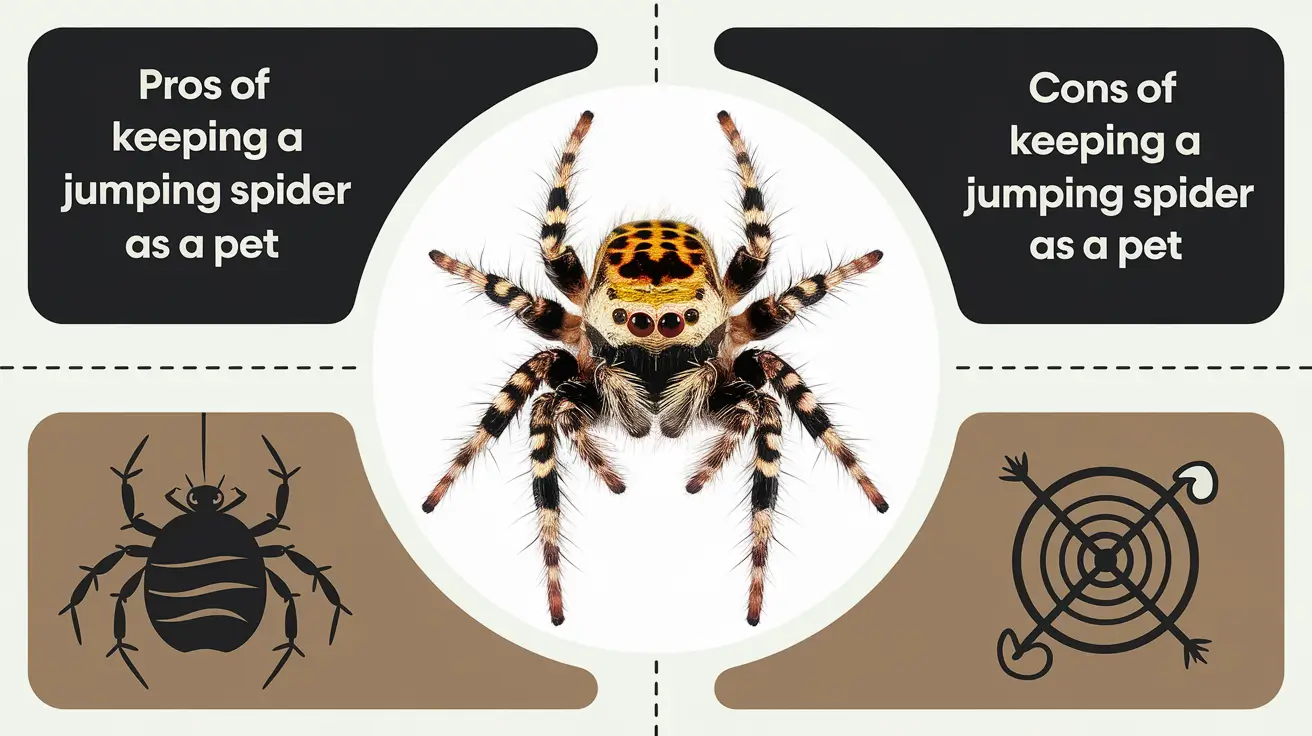Are Jumping Spiders Good Pets? 7 Steps Comprehensive Guide to Choose Jumping Spider
When it comes to choosing an unusual pet, many people overlook the fascinating world of spiders. One spider, in particular, the jumping spider, has gained popularity in recent years as a pet. But the question remains: are jumping spiders good pets? If you’re curious about these tiny, energetic creatures and whether they make good companions, you’ve come to the right place.
This article explores the pros and cons of keeping jumping spiders as pets, providing detailed insights into their care, behavior, and overall suitability as a pet.
Table of Contents
- Why Choose Jumping Spiders as Pets?
- Step 1: Understanding Jumping Spider Behavior
- Also Read: What Snakes Make Good Pets? 4 Fascinating Reasons
- Step 2: Setting Up a Home for Your Jumping Spider
- Step 3: Feeding Your Jumping Spider
- Step 4: Handling Your Jumping Spider
- Step 5: Maintenance and Cleaning
- Step 6: Health Considerations for Your Jumping Spider
- Step 7: The Pros and Cons of Keeping a Jumping Spider as a Pet
- Spider Jumping as a Pet: Is It Possible?
- Do Jumping Spiders Bond with Humans?
- Do Jumping Spiders Like Being Pet?
- Do Jumping Spiders Like to Be Held?
- What Is the Friendliest Pet Spider?
- Are Jumping Spiders Friendly?
- Are Jumping Spiders Good Pets for Beginners?
- Are Jumping Spiders Good Pets for Sale?
- Are Jumping Spiders Good Pets for Kids?
- Are Jumping Spiders Good Pets?
- Conclusion: Are Jumping Spiders Good Pets?
- FAQs Are Jumping Spiders Good Pets?
Why Choose Jumping Spiders as Pets?
Jumping spiders, with their curious eyes and charming personalities, are becoming increasingly popular as pets. But before you make the decision to keep one, it’s important to understand what makes them unique and why they may or may not be a good fit for you.
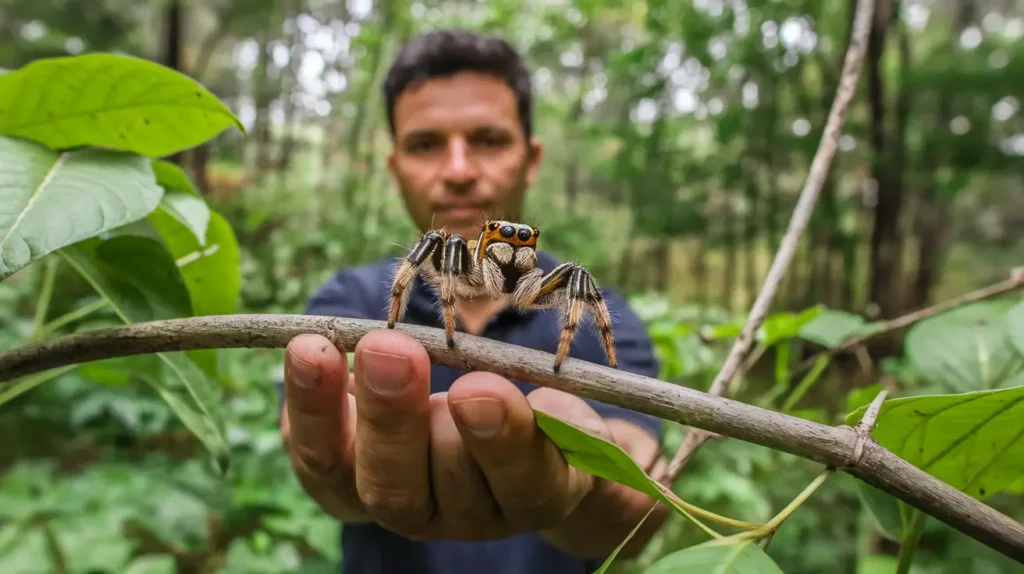
1. Small Size, Low Maintenance
One of the biggest advantages of jumping spiders is their small size. Unlike larger tarantulas or other spiders, they require minimal space and have low maintenance needs. This makes them ideal for people with limited space or those who don’t want a pet that requires constant attention.
2. Fascinating Behavior
Jumping spiders are incredibly active and curious. They hunt by leaping from one place to another, which is not only entertaining but also captivating to watch. Their intelligence and social behaviors make them stand out from other spiders, and their curious nature often attracts people who are interested in the more unusual aspects of the animal kingdom.
Step 1: Understanding Jumping Spider Behavior
If you’re considering keeping a jumping spider, it’s crucial to understand their behavior and natural instincts. Are they friendly? Do they interact with humans?
Do Jumping Spiders Have Personalities?
Yes! Jumping spiders are known for their distinct personalities. They are incredibly observant and curious creatures. While they may not “bond” with humans in the traditional sense, they are known to react to movements and gestures. Some owners report their spiders “following” their finger with their eyes, creating a sense of connection.
Are Jumping Spiders Dangerous?
The good news is that jumping spiders are not dangerous to humans. Their venom is not potent enough to harm people, although it might cause minor irritation in the rare case of a bite. However, their small size and quick movements make them more curious than aggressive.
Also Read: What Snakes Make Good Pets? 4 Fascinating Reasons
Step 2: Setting Up a Home for Your Jumping Spider
If you decide that a jumping spider is the right pet for you, you’ll need to set up an appropriate home for it. Fortunately, their habitat requirements are relatively simple.
Choosing the Right Enclosure
Jumping spiders don’t need much space, but they do need an enclosure where they can explore and hunt. A small glass or plastic container works well, but make sure it’s tall enough for the spider to climb. They love to explore vertical surfaces, and providing them with plenty of climbing opportunities will keep them active and healthy.
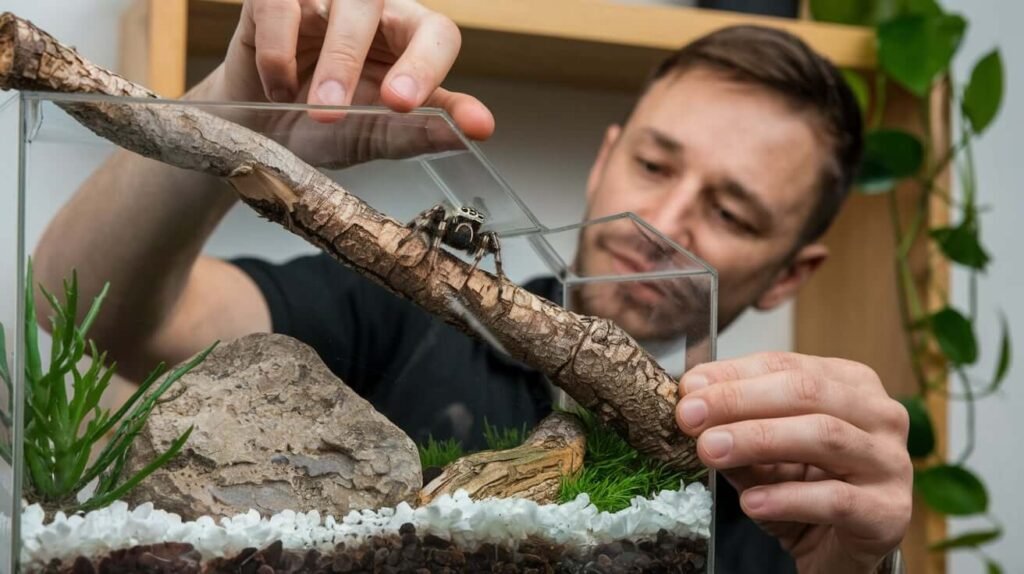
Temperature and Humidity
Jumping spiders thrive in warm, dry environments. Aim to keep their enclosure between 70-80°F (21-27°C) with moderate humidity. Ensure the environment is not too damp, as excessive moisture can cause mold or fungal growth. Use a thermometer and hygrometer to monitor the conditions.
Step 3: Feeding Your Jumping Spider
Feeding is one of the most important aspects of keeping a jumping spider healthy. These arachnids are predators, and their diet mainly consists of small insects.
What Do Jumping Spiders Eat?
Jumping spiders primarily feed on small insects such as flies, crickets, and mealworms. It’s essential to provide them with a diet rich in protein to keep them healthy and active. You can also provide them with various insect species, which will allow you to observe their hunting techniques.
How Often Should You Feed a Jumping Spider?
Jumping spiders don’t need to eat every day. Typically, feeding them 2-3 times a week is sufficient. However, you should always remove any uneaten food to prevent it from decaying in the enclosure.
Step 4: Handling Your Jumping Spider
While jumping spiders are relatively easy to care for, handling them is a different matter. Unlike some pets, jumping spiders are not cuddly or interactive in the same way a dog or cat might be. However, many people enjoy watching them up close or allowing them to walk on their hand.
Can You Handle a Jumping Spider?
You can handle a jumping spider, but it’s essential to be gentle. They are small and fragile, so avoid any rough handling. Let the spider crawl on your hand or finger naturally rather than trying to pick it up. Also, always be mindful of its safety and ensure there’s a safe space for it to climb.
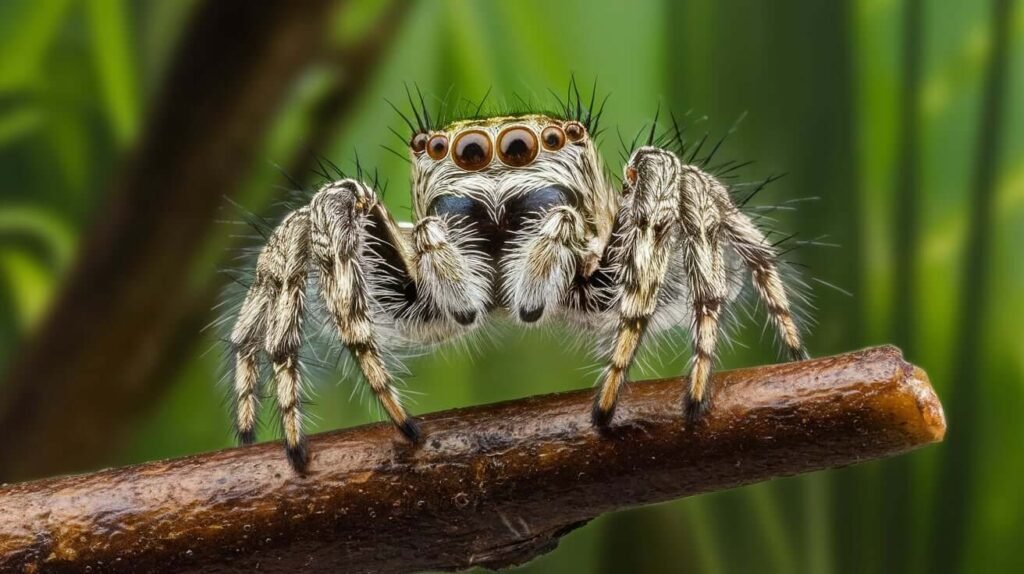
Step 5: Maintenance and Cleaning
Keeping a jumping spider as a pet is relatively low-maintenance, but regular cleaning is still necessary to maintain a healthy environment.
Cleaning the Enclosure
It’s important to clean your spider’s enclosure regularly. Remove any leftover food, debris, and waste. Spot clean the tank every week, and do a more thorough cleaning every month to ensure the environment remains safe for your spider.
Molting and Growth
Jumping spiders molt as they grow, shedding their exoskeletons periodically. During this time, the spider may become less active, and it’s essential to avoid disturbing them. Ensure the enclosure remains clean to minimize the risk of infection or issues during the molting process.
Step 6: Health Considerations for Your Jumping Spider
Just like any pet, jumping spiders can encounter health issues. It’s important to be vigilant and watch for signs of illness.
Signs of Stress or Illness
Stress in jumping spiders can manifest through a lack of appetite or lethargy. If your spider is not eating or becomes immobile, it might be stressed or unwell. In such cases, check the environmental conditions and remove any potential sources of stress, such as overly large prey or an overly bright enclosure.
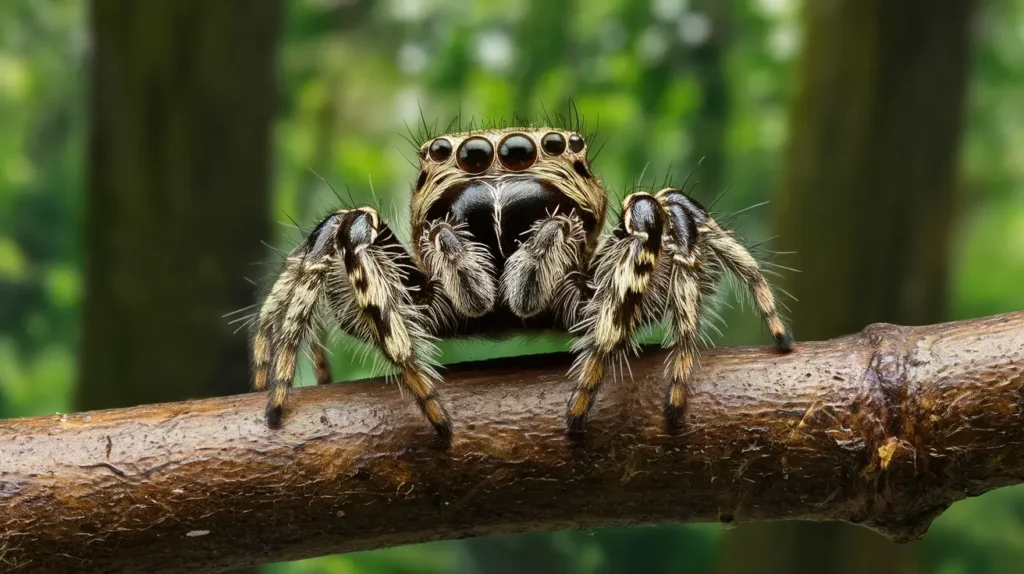
Dealing with Injuries
Injuries, such as lost legs, are not uncommon for jumping spiders. While they can survive with missing limbs, you should ensure that any wounds are kept clean to prevent infection. If you notice any abnormalities, it’s a good idea to consult with an arachnid expert or veterinarian.
Step 7: The Pros and Cons of Keeping a Jumping Spider as a Pet
Like any pet, keeping a jumping spider has its advantages and challenges. Here’s a quick summary of the pros and cons.
Pros:
- Low maintenance: Jumping spiders don’t require constant attention.
- Small space requirements: They thrive in small enclosures.
- Fascinating behavior: They are intelligent and active, making them fun to watch.
- Non-aggressive: They are not dangerous to humans.
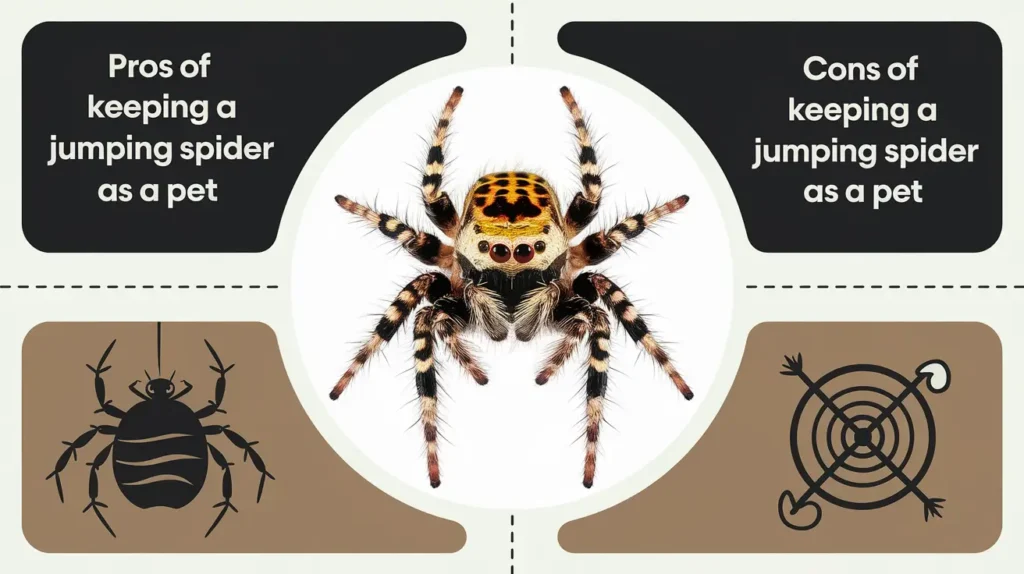
Cons:
- Not interactive: Jumping spiders don’t form bonds with humans in the way other pets might.
- Feeding requirements: They need live prey, which might be off-putting to some owners.
- Short lifespan: Jumping spiders typically live 1-2 years, which might be short compared to other pets.
Spider Jumping as a Pet: Is It Possible?
Yes, jumping spiders can be kept as pets! They are increasingly popular among arachnid enthusiasts due to their small size, low maintenance, and curious behavior. Their ability to recognize their surroundings and exhibit unique personality traits makes them fascinating companions.
Jumping Spider for Sale
Jumping spiders are often sold online through exotic pet suppliers or forums. You can also find them locally, as some species are native to many regions worldwide. Popular species for pets include:
- Phidippus regius (Regal Jumping Spider): Known for vibrant colors and friendliness.
- Phidippus audax: Common and hardy. Prices typically range from $10 to $30 depending on the species and rarity.
Do Jumping Spiders Bond with Humans?
While jumping spiders don’t “bond” like mammals, they can recognize their owners over time and may become comfortable with them. Regular, gentle interactions can make them less wary and more interactive.
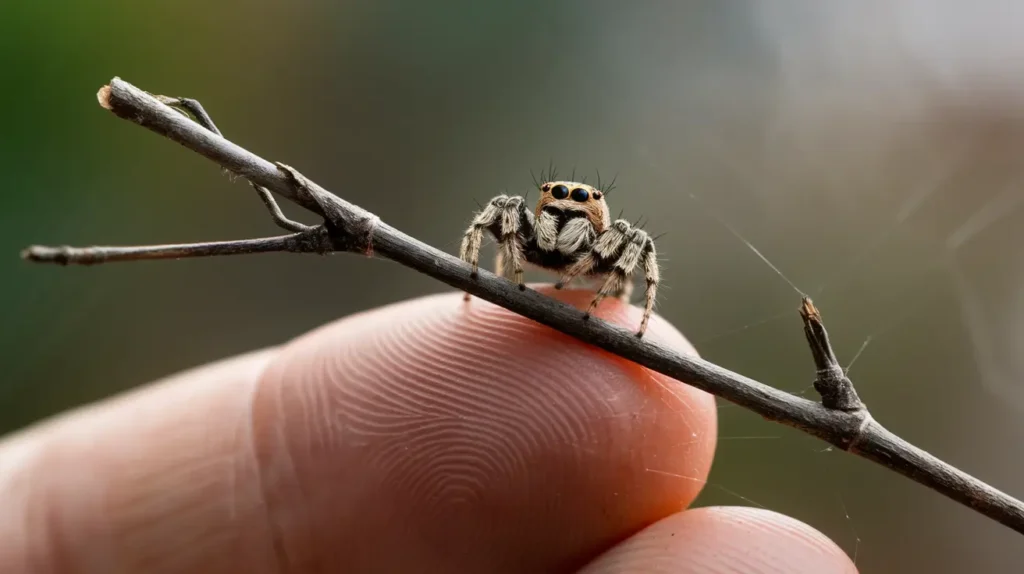
Do Jumping Spiders Like Being Pet?
Jumping spiders do not enjoy being petted in the way mammals do. They might tolerate gentle touches on their legs or abdomen, but excessive handling can stress them. Instead, observe and interact with them without causing discomfort.
Do Jumping Spiders Like to Be Held?
Some jumping spiders can be comfortable being held if handled gently and with care. Always ensure your hands are clean and avoid sudden movements. However, not all jumping spiders will enjoy being handled, so watch their body language.
What Is the Friendliest Pet Spider?
Jumping spiders are considered the friendliest pet spiders due to their:
- Docile nature.
- Curious behavior.
- Ease of handling.
Other beginner-friendly spiders include tarantulas like the Chilean Rose Tarantula and Mexican Red-Knee Tarantula.
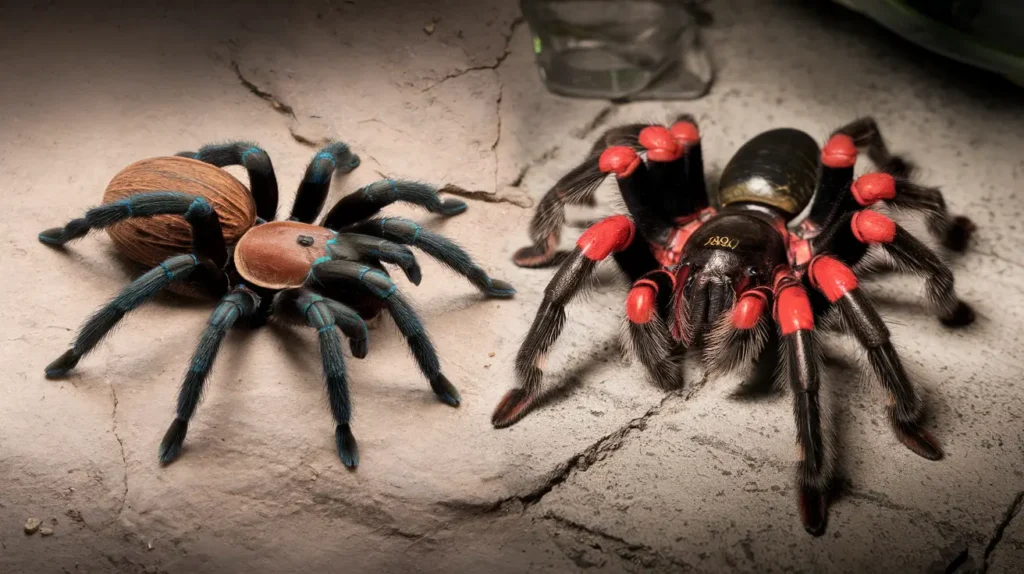
Are Jumping Spiders Friendly?
Yes, jumping spiders are known for their friendly and curious nature. They often observe their surroundings and may even approach humans out of curiosity. Their non-aggressive temperament makes them a favorite among spider enthusiasts.
Jumping Spider Pet for Sale
Jumping spiders can be purchased from:
- Exotic pet stores.
- Online breeders or marketplaces like MorphMarket or private forums.
- Local hobbyists or arachnid enthusiasts. Ensure the seller provides healthy specimens and proper care instructions.
Are Jumping Spiders Good Pets for Beginners?
Yes, jumping spiders are excellent for beginners because:
- They are low maintenance.
- Require minimal space.
- Are hardy and adaptable to captivity.
- Have fascinating behaviors that make them fun to watch.
Are Jumping Spiders Good Pets for Sale?
Jumping spiders are readily available for sale and are a good choice for anyone looking for a low-cost, interactive pet. Always verify the seller’s credibility and ensure the species is not endangered.
Are Jumping Spiders Good Pets for Kids?
Jumping spiders can be suitable for older kids under supervision. They teach responsibility and curiosity about nature. However:
- Young children should not handle them due to the spider’s delicate nature.
- Emphasize observing rather than direct handling.
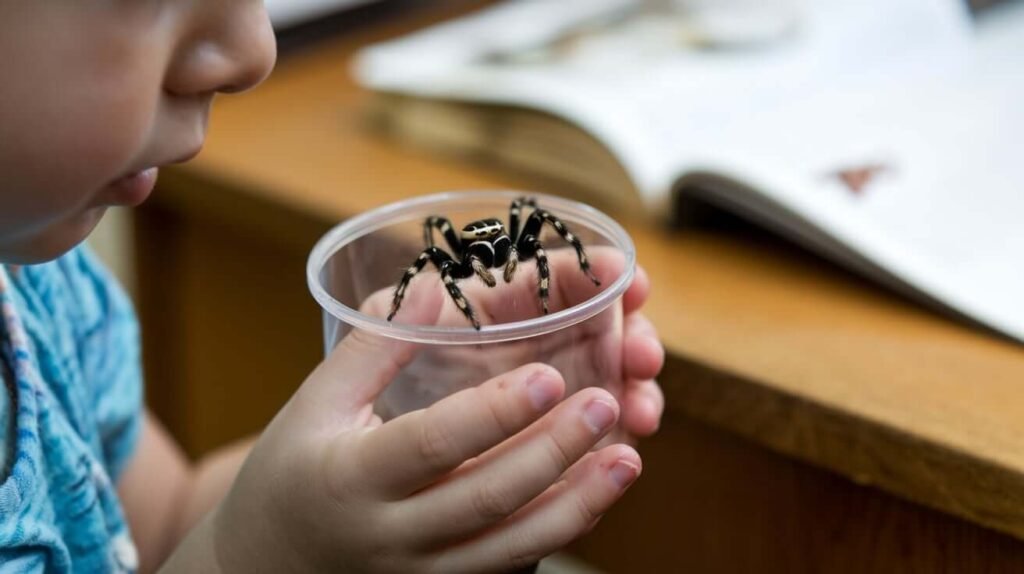
Are Jumping Spiders Good Pets?
Absolutely! They are:
- Fun to observe due to their active behavior and hunting style.
- Easy to care for with basic enclosures and diets of small insects.
- Fascinating creatures that often spark interest in arachnology.
Do Jumping Spiders Bite?
Jumping spiders can bite if they feel threatened, but bites are rare and typically occur as a last resort. Most bites are painless or cause mild irritation, similar to a mosquito bite.
Are Jumping Spiders Poisonous?
Jumping spiders are not dangerous to humans. They are venomous (to subdue prey), but their venom is too weak to harm humans. At most, a bite may cause mild swelling or redness.
Conclusion: Are Jumping Spiders Good Pets?
So, are jumping spiders good pets? The answer depends on what you’re looking for in a companion. If you’re intrigued by the idea of owning a low-maintenance pet that’s both fascinating and visually interesting, a jumping spider might be a great choice. They’re easy to care for, require minimal space, and offer a unique window into the behavior of arachnids. However, they aren’t the best choice for someone looking for an interactive, cuddly pet. Ultimately, jumping spiders make excellent pets for the right person—especially those who appreciate watching these small creatures in action.
FAQs Are Jumping Spiders Good Pets?
Can jumping spiders bond with humans?
Jumping spiders don’t form bonds in the same way as other pets, but they can recognize and interact with their owners to some extent.
Do jumping spiders need a lot of attention?
No, they are low-maintenance pets and do not require constant attention.
How long do jumping spiders live?
Jumping spiders typically live for 1-2 years.
Can jumping spiders live in a community?
No, jumping spiders are solitary creatures and should be kept alone to prevent territorial fights.
Are jumping spiders safe to handle?
Yes, jumping spiders are generally safe to handle as long as you are gentle and careful.

